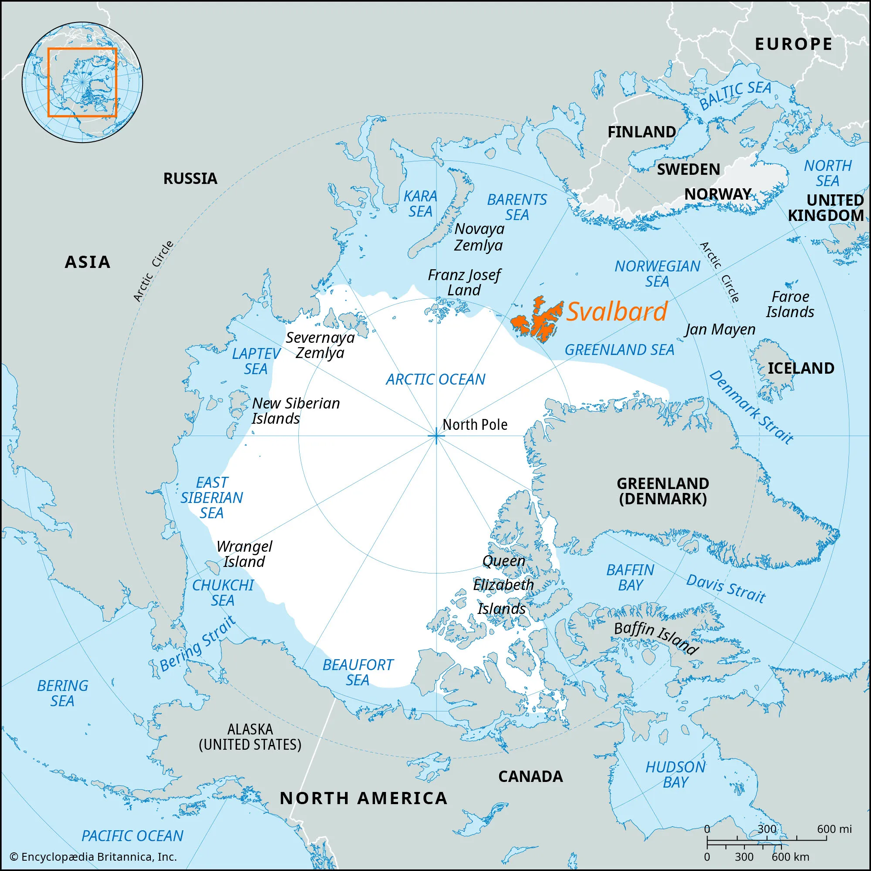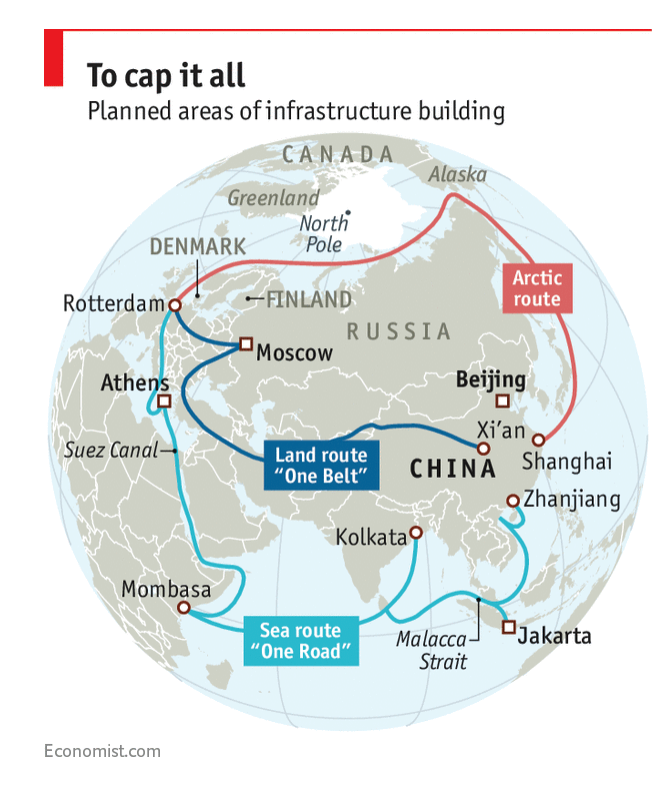

Extra Cover
Published in Extra Cover
China, Russia, and the Arctic
Changes now underway in the Arctic have put immense pressure on the region as well as governments’, communities’ and autochthonous peoples’ capability to face contemporary security challenges of an environmental, economic, food-related, and public health challenges.
Climate changes rate among the factors that most affect the physical environment and livelihoods of people in the region, as well as the geopolitical forces at play. Average global temperature is rising and the Arctic is warming up more rapidly than any other region in the world. For instance, spring and summer 2019 were ranked among the three hottest since 1979, and mean temperatures from June to August came in at 3 to 4 Celsius above average. Between 1979 and 2019, the linear rate of decline for sea ice was 82.400km2/year, which gives us 12.9% every decade compared to the 1981-2010 average. Scientists do not exclude the possibility that the Arctic may in the future thaw out completely during the summer months. Atmospheric warming leads to a decline in land snow cover in spring as well as diminished duration and surface for snow cover during autumn.
The Arctic thaw has motivated discussions on the rise of new economic opportunities, mostly connected with navigation and extraction of natural resources. Which in turn led to a number of security challenges, namely, security measures to protect maritime biomes, the lack of adequate infrastructure to support shipping lanes, and the general absence of search and rescue capabilities. Exploiting oil and gas increases the risk of pollution from spills with the potential to impact ecosystems, wildlife, and local communities’ means of subsistence. Mining operations and major infrastructural projects are also regarded as a risk to the latter, while extractive industries simultaneously constitute a basis for economic security and employment in the Arctic.
One of the key players with an understanding of profound changes affecting the Arctic is Russia, which has been building up its military capabilities over the past decade. Starting 2011, Russia recommissioned several military bases and renovated airfields and radar stations. The country has also modernized its ocean-based nuclear assets and major North Fleet vessels harboured on the Kola Peninsula. In December 2014, Russia established a Joint Strategic Command for the North Fleet to consolidate branches of the armed forces under a single authority, reviving nuclear submarines equipped with ballistic ammunition as a deterrent and guarantee of access to the North Atlantic.

These moves fan the flames of growing geopolitical tensions in the region and merit closer scrutiny from European countries on the Arctic, as well as from NATO. Few case studies better exemplify this change than Svalbard, a Norwegian archipelago about twice the size of Belgium located 650km off the Norwegian mainland and a mere 1000km from the North Pole. An analysis of the links between geography and power plays around Svalbard — Norway’s most remote territory, with a unique political and economic status — reveals the nuance of geopolitical competition and the way how simple representations of conflict scenarios could prove useless.
Svalbard’s exceptional regional positioning is especially pertinent. The archipelago is of strategic importance. Its location may be the key to controlling Russia’s North Fleet’s comings and goings from the Kola Peninsula. Not to mention that the waters around Svalbard teem with fish stock and offer rich mineral deposits. The thaw will gradually improve access to some of these resources and may make it easier for maritime activities to grow in this section of the Arctic. These islands are the object of a border agreement between Norway and Russia, but given the precedent established by the war in Ukraine, the breakdown of the relationship with Moscow and a Russian community around coal mines, Oslo has much to worry about.
China's interest in the region also raises concerns among Arctic states. Xi Jinping has announced China’s intent to become “a great polar power” to facilitate its goal of becoming a major sea power only two years into his first presidential term. In 2021, the Chinese Communist Party's Five-Year Plan once again emphasized involvement in the Arctic. They called it the “Polar Silk Road.” China’s interests in the Arctic include scientific exploration, governance, and economic diversification. They cover free navigation along shipping lanes — crossing Russia’s exclusive economic zone and, once the ice is gone, the Transpolar Sea Route on international waters — as well as the extraction of resources such as oil, gas, minerals, and fish stock, not to mention tourism. These wide-ranging priorities, combined with technologies with a dual civil and military application, also afford Beijing an opportunity to enlarge its footprint, collect data on the technology and military systems employed by other Arctic powers, and acquire technical and operational knowledge.
Meanwhile, as we know, the Russia-China partnership in the Arctic, as well as the bigger picture of the strategic relationship between Moscow and Beijing, have undergone significant progress over the past decade and reached unprecedented levels since Russia invaded Ukraine. Growing alignment between the two countries as well as their joint military activities across the Arctic have been discussed as a sign that Russia's former reservations toward China’s global ambitions, its historical emphasis on exerting sovereign control over Arctic territories and related effort to limit third-party access to the region, may be fading away as Moscow seeks to make up for vulnerabilities arising from the large-scale invasion of Ukraine, among other factors.
Several high-profile developments, including a joint naval patrol around the Aleutians in August 2023, plus the signature of a Russia-China memorandum of understanding on the application of maritime law on the North Sea Route in April 2023, can be perceived as potential inflection points for this bilateral relationship in the Arctic Circle. One year later, in April 2023, the Russian and Chinese navies signed an additional memorandum of understanding outlining matters of “high sea” search and rescue operations. Meanwhile, Russia invited the BRICS to test their equipment during the Arctic operations scheduled for 2025. These actions demonstrate Moscow’s growing efforts to cooperate with non-Western actors in the sphere of geopolitical competition on the North Pole.
Although these announcements are meaningful, enforcement of joint measures may prove uneven. Incremental activities that have received less publicity and take place under cover of civilian operations may be more difficult to monitor but actually mean a lot more. Of particular concern are joint efforts to support developments in the defence industry, the development of dual-use infrastructure with potential to assist military operations and the transit of merchant vessels, which can be exploited to obtain third-party data and threaten NATO allies. Moscow’s and Beijing’s autocratic governments and focus on hybrid activities, accelerated by the war in Ukraine, turn the clear separation between civilian and military activities into a major challenge. This is especially clear when it comes to the PRC, whose explicit strategy for development of a civilian-military merger assumes that any civilian activity can support military ambitions and the development of its defence industry.
The North Sea Route is the key lane for trade cooperation between Russia and China in the Arctic. Trade along this route plays an essential role in the Russian economy and Beijing sees it as a source of economic and strategic opportunities. The two countries have dissimilar yet complementary economies. Russia mostly exports raw materials, in-demand minerals and energy, all highly sought after by Beijing, and imports complex technologies and electronic components from China, some of which it deploys the war effort in Ukraine.

Russia holds the largest gas reserves in the world (most of them clustered around the Yamal Peninsula) and is one of the top three crude oil producers in the world. Considering that economic sanctions against Russia have cut off gas delivery to Europe via the Yamal pipeline, Moscow has grown more and more reliant on the North Sea Route to ship oil and liquefied natural gas — Asian markets have become higher priority for Russia, as European demand for Russian fossil fuels has dwindled. China takes advantage of this status quo as it guarantees favourable energy prices and increased access to the Arctic. And it benefits yet again when Russia endeavours to transfer a part of its Arctic mineral production to China, to avoid sanctions on plant and equipment and secure direct access to the Beijing market. Take Russian company Nornickel, for example. It announced the closure of its copper factory in the Arctic and its move to China.
Although Moscow is wary of increasing reliance on Beijing and the differences in strategic culture between Russia and China, it seems that economic and political necessity fosters stronger ties with China, across the Arctic and beyond. Even if the two countries’ long-term interests diverge, it is difficult to imagine a scenario where this growing interdependency and technological enmeshment do not lead to sustained alignment with China and greater Chinese influence. China boasts a stronger economy and more technological advancement, and the Arctic is relevant to China insofar as it helps secure its economic and security interests over the long term. When something is of strategic importance to China, it ought to be just as meaningful to Europeans and Americans, who should join forces to keep China and Russia apart. And that battle will play out on the Arctic chessboard as well.
Text written before November 1, 2024.
Disclaimer: Bernardo Pires de Lima, research fellow with the Portuguese Institute of International Relations (Instituto Português de Relações Internacionais) at Nova University of Lisbon.
The views, thoughts and opinions expressed herein belong solely to the author and do not reflect the official positions or policies of, or obligate, any institution, organization or committee he may be affiliated with.